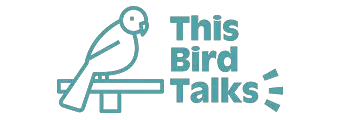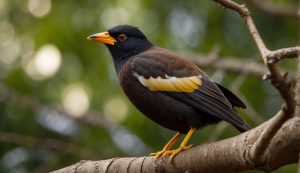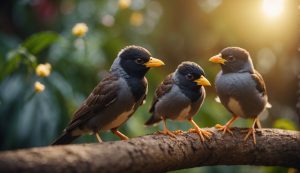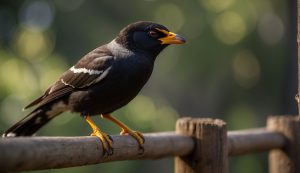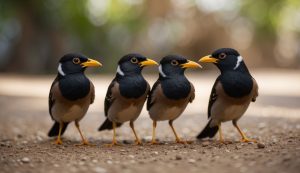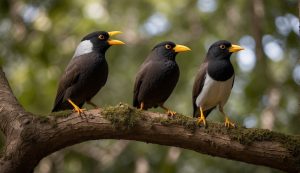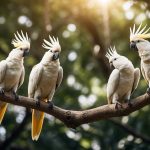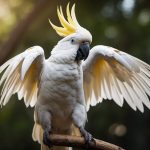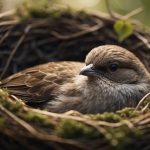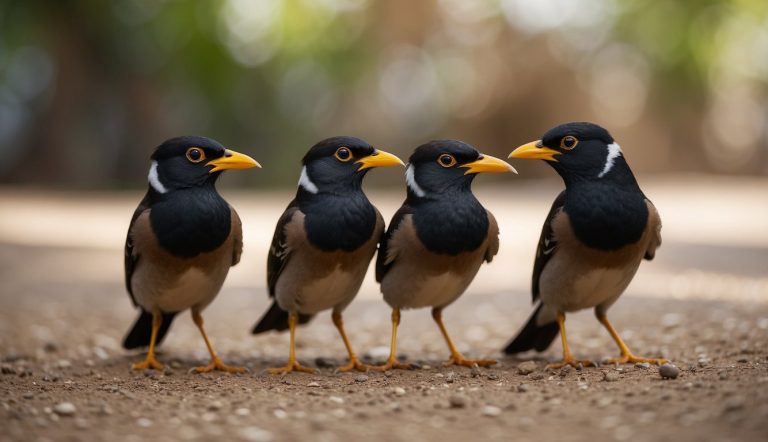What Do Mynah Birds Eat? Understanding Their Diet Preferences

Mynah birds are fascinating not just for their mimicry skills, but also for their dietary habits.
In the wild, these birds are omnivorous. Their diet includes fruits, insects, and nectar. Observations suggest that during certain seasons like cherry season, mynah birds may consume larger quantities of particular fruits.
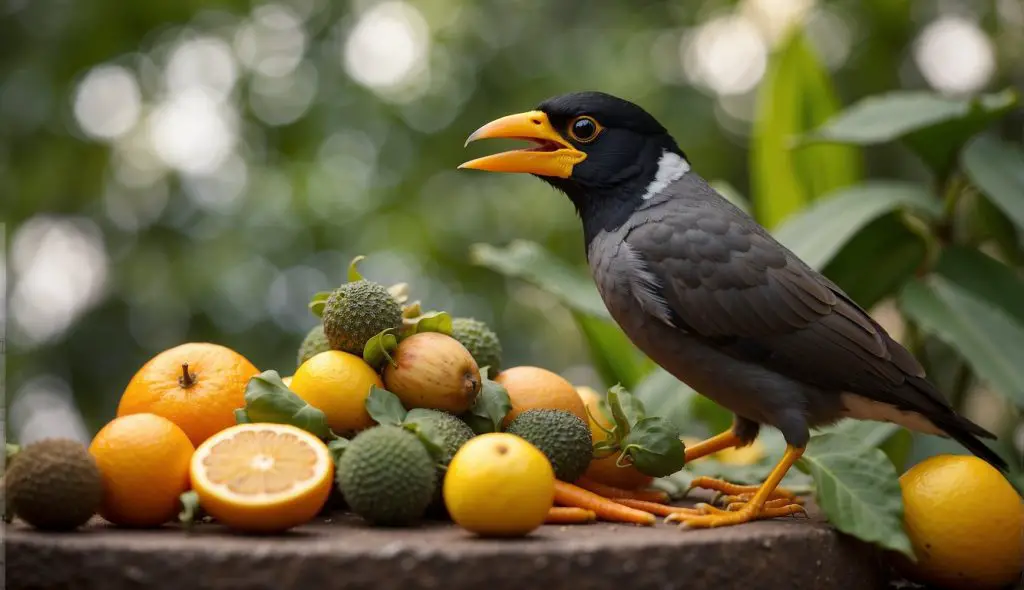
The diet of mynah birds in captivity needs to be as varied as their diet in the wild to ensure good health. In captivity, their diet can include commercially available pelleted diets low in iron, fresh fruits, and vegetables, as well as occasional protein sources such as insects.
It’s crucial to manage their iron intake due to their susceptibility to iron storage diseases, resembling conditions like human hereditary hemochromatosis.
Key Points
- Mynah birds have an omnivorous diet that changes with availability and season.
- Captive mynah birds require a diet low in iron and rich in variety.
- Proper diet is vital for preventing health issues and mimicking natural feeding behaviors.
Table of Contents
What Are a Mynah Birds Dietary Essentials?
In caring for mynah birds, I’ve learned they require a balanced diet full of diverse nutrients to thrive. These birds are not only unique in their vocal abilities but also in their dietary needs.
Omnivorous Behavior
Mynah birds have omnivorous tendencies, meaning they eat both plant and animal-based foods.
In the wild, their diet consists mainly of fruits, nectar, and insects. When I feed them in captivity, I aim to mimic this natural diet to ensure they receive the assortment of proteins, vitamins, minerals, and carbohydrates they would typically forage for.
Proteins are particularly important. I’ve found that offering a mix of insects like crickets and mealworms, along with high-quality commercial pellets low in iron (<100ppm), supports their robust health.
Importance of Variety
I always stress the importance of variety in a mynah bird’s diet. Since they are predisposed to conditions like iron storage disease, it’s crucial to provide a diet that’s not just varied but also low in iron.
I prioritize feeding:
- Fruits: Apples, pears, berries, and tropical fruits.
- Vegetables: Leafy greens and soft vegetables.
- Proteins: Cooked lean meats and low-iron commercial pellets.
- Supplements: A specialized avian vitamin and mineral supplement to prevent any deficiencies.
This combination promotes a balance of fat and carbohydrates as well, catering to their energetic nature. Choosing the right food and carefully planning their diet not only keeps them healthy but also enhances their colorful personalities that we all love.
Natural Diet of Wild Mynah Birds
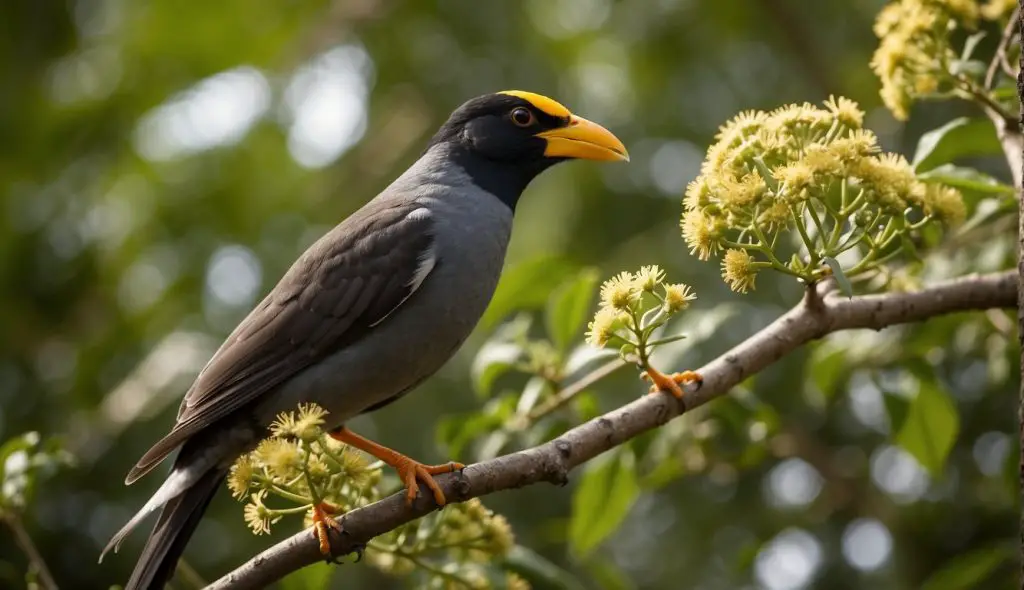
When I observe mynah birds in the wild, I notice their diet is quite diverse, focusing heavily on proteins like insects and sweet treats from nature like fruits and nectar.
Insects and Other Protein Sources
In the natural habitats where mynah birds thrive, I find them feasting on a variety of insects. Crickets are often on the menu, and these birds adeptly catch them for a protein-rich meal.
But that’s not all; seeds from the surrounding flora also make up a significant part of their diet. It’s intriguing to see how they balance their nutritional intake by consuming both animal and plant sources of protein.
Feeding on Fruits and Nectar
Mynah birds have a sweet side, and in the wild, they show a strong preference for fruits and nectar.
They feed on various fruits, often choosing those that are ripe and juicy. When it comes to nectar, they seek out certain flowers, dipping their beaks in to sip on the sugary fluid. This not only provides them with a burst of energy but also plays a crucial role in pollination.
Feeding Mynah Birds in Captivity
When I care for my mynah birds, I make sure their diet is nutritious, balanced, and mimics their natural feeding habits to help them thrive.
Commercial Pellets and Bird Food
I always start with high-quality commercial pellets designed for softbilled birds like mynahs. These pellets typically contain less than 100 parts per million of iron, which is crucial since my birds are prone to iron storage disease.
I make sure that the pellets I choose are low in iron to prevent health issues:
- Mynah bird pellets
- Passerine pelleted diets
Fresh Food and Treats
In addition to pellets, I like to offer a variety of fresh foods to provide enrichment and essential nutrients. These foods include:
- Fruits: like sweet potatoes, which are rich in vitamins
- Vegetables: such as broccoli and peas for minerals and fiber
- Insects: occasionally, I provide live treats like grasshoppers and larva for protein
Note: It’s important to thoroughly clean all fresh foods to remove any pesticides or contaminants.
Water and Hydration
Hydration is key for my mynah birds. I provide a constant supply of fresh water, changing it at least once daily to keep it clean.
I avoid using tap water if it’s high in minerals or contaminants. Instead, I opt for filtered or bottled water to ensure my birds have the best:
- Fresh, clean water should be available at all times
- Water containers need to be cleaned daily to prevent bacteria
Health Considerations in Feeding
In my experience with feeding mynah birds, it’s critical to understand the balance necessary to maintain their health. I focus strongly on their diet to prevent common health issues.
Avoiding High-Fat and High-Sugar Foods
I’ve learned that mynah birds can develop health problems if their diet is too rich in fat and sugar.
Fruits should be offered, but I take care to limit fruits high in sugar. Instead, I emphasize feeding:
- Low-sugar fruits: such as papaya and melon
- Vegetables: like spinach and carrots for nutritional variety
By controlling the intake of fat and sugar, I help ensure that my birds maintain a healthy weight and avoid the risk of obesity.
Preventing Hemochromatosis
One particular health issue I’m careful about is hemochromatosis, also known as iron storage disease.
My strategy to prevent this condition includes:
- Feeding a low-iron diet: specially-formulated mynah bird pellets
- Avoiding high-iron foods: such as certain leafy greens and red meats
Special Dietary Needs Across Life Stages
In my experience raising Mynah birds, I’ve learned that their nutritional requirements vary significantly as they progress through different life stages. It’s crucial to cater to these changes to ensure their health and longevity.
Feeding Baby and Juvenile Mynahs
When baby Mynahs hatch from their eggs, I make sure their diet mimics what they would receive in the wild. These young birds start by eating a high-protein diet to support their rapid growth.
Here’s what I usually feed them:
- Softened pellets: Specifically formulated for Mynahs, providing all the essential nutrients.
- Insect larvae: Such as mealworms, for a natural source of protein.
I feed baby Mynahs every 2-3 hours until they can eat independently, usually by the four-week mark.
Supporting Breeding Birds
Breeding Mynahs require a boost in certain nutrients to ensure they can produce healthy eggs and have the energy for the demands of breeding. Here’s the dietary plan I follow for them:
- Calcium supplementation: Essential for egg-laying females to prevent egg binding and ensure strong eggshells. I often use cuttlebone or calcium drops in their water.
- Protein-rich food: To support the breeding process, I include more insects and soft meat (cooked and chopped) in their diet.
Frequently Asked Questions
In this section, I’ll cover some common inquiries about the dietary habits of mynah birds, from suitable fruits to specific regional feeding practices.
What fruits can be included in mynah birds’ diet?
I’ve observed that mynah birds enjoy a variety of fruits, which should be a staple in their diet. Cherries and figs are firm favorites, and like us, they appreciate the sweetness and nutritional benefits of these treats.
How can I properly care for and feed a baby mynah bird?
When I care for a baby mynah, I make sure to provide a diet rich in protein. Initially, baby bird formula is ideal, which I gradually supplement with fruits and softened pellets as they grow.
What should I avoid feeding my mynah bird?
I always avoid feeding chocolate, avocado, and caffeine to my mynah bird, as these can be toxic to them. I also steer clear of excessively sugary or salty foods to prevent health issues.
What type of food is considered healthiest for mynah birds?
In my experience, a balanced diet is the healthiest choice for these birds. This diet includes insects, a variety of fruits like grapes and figs, and a specially formulated mynah bird pellet mix.
Are there any special considerations for feeding mynah birds in different regions, such as Hawaii?
When feeding mynah birds in regions like Hawaii, I consider the impact on local ecosystems. I make sure to offer foods that don’t compete with native species and avoid foods that encourage mynahs to prey on local wildlife.
Can mynah birds safely consume common grains like rice?
Yes, mynah birds can eat grains like rice. I ensure that the grains are cooked. Uncooked rice can be hard for them to digest. Soft, cooked rice can be a good part of their varied diet.
